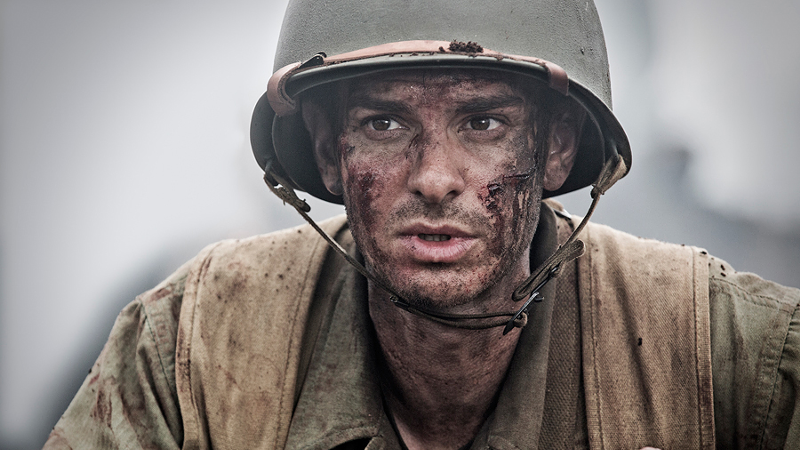In Hacksaw Ridge, Desmond Doss (Andrew Garfield) is an earnest small-town conscientious objector and Army medic who “fought” in battle, helping injured comrades without carrying a weapon. He even received a Medal of Honor.
The film shows him at first engaging in a war of wills against his training sergeant (Vince Vaughn), his commanding officer (Sam Worthington) and the men of his platoon before confronting the horrors of the Battle of Okinawa during World War II.
Gibson’s dark battlefield vision is the foundation of Doss’ ethical decision to not take up arms. We see Doss’ effort to prove himself to be a highly committed trainee, weathering the hailstorm of abuse with no sign of cracking.
This commitment stems from a complex stew of personal experiences. Doss watched his father (Hugo Weaving) succumb to extreme guilt over having survived World War I when so many of his boyhood friends did not. The younger Doss also lives with his own guilt-ridden promise to God after a raucous clash with his older brother when they were boys nearly ended in tragedy. Feeling firsthand the furious and destructive power of striking out in anger, he decided then and there to never allow that to happen again.
Somehow, Doss emerges from these early traumas with a romantic outlook that is forged by the conviction that the world can and should be seen from a binary perspective — there is right and then there is everything else. Doss the character and Gibson the director don’t quite go so far as to assume that the other side is wrong. Rather, it just adheres to an alternate viewpoint.
But make no mistake: Doss is on the side of the angels, with his own heavenly guardian — Dorothy Schutte (Teresa Palmer), a nurse he naively stumbles upon before signing up for military duty.
Once Doss earns the right to storm the beach at Okinawa, we see a nightmarish realm not fit for denizens of the real world in the middle of a horrific location. It is the bloody merger of the most violent scenes of Steven Spielberg’s Saving Private Ryan and Quentin Tarantino’s Pulp Fiction or Inglourious Basterds. Gibson is unreservedly straightforward in his displays of graphic violence, even when his characters use mutilated bodies to shield themselves in combat.
The monumental endeavor to claim Hacksaw Ridge, a treacherous cliff that must be scaled, sets the American forces up as targets for the Japanese waiting in the foggy shadows. This bears all the marks of the kind of suicidal, impossible missions we see in war and action movies. And Gibson stages the ongoing assault with all the relentlessness we would expect from the director of Braveheart and the performer known for his roles in The Patriot and Mad Max.
Surprisingly though, because the narrative zeroes in on Doss, a certain reflective cinematic stillness takes hold of Gibson’s movie. Maybe it is because of the character’s unwavering faith in the righteousness of his choice, but Hacksaw Ridge shifts, ever so slightly, toward the surrealism of Joe Wright’s Atonement, in particular that film’s famous extended tracking shot of panicked British soldiers trying to regroup at Dunkirk during World War II. Gibson forgoes the bravado of a technical stunt like that, but what he offers instead is gruesome and alluring in its own fashion. Gibson has an eye for amped-up action sequences and the startling blood splatters that can emerge from ruptured bodies. He never lets us forget that he’s the man behind The Passion of the Christ, which was an unending circus of pain.
I believe Hacksaw Ridge seeks to illustrate that Gibson’s aim is to step back from the violent brink, that dangerous edge we associate with him. But only marginally. This film is harrowing, to be sure, but expertly drawn in the service of a great and remarkable true story. (Opens wide Friday) (R) Grade: B+
CONTACT TT STERN-ENZI: [email protected]


